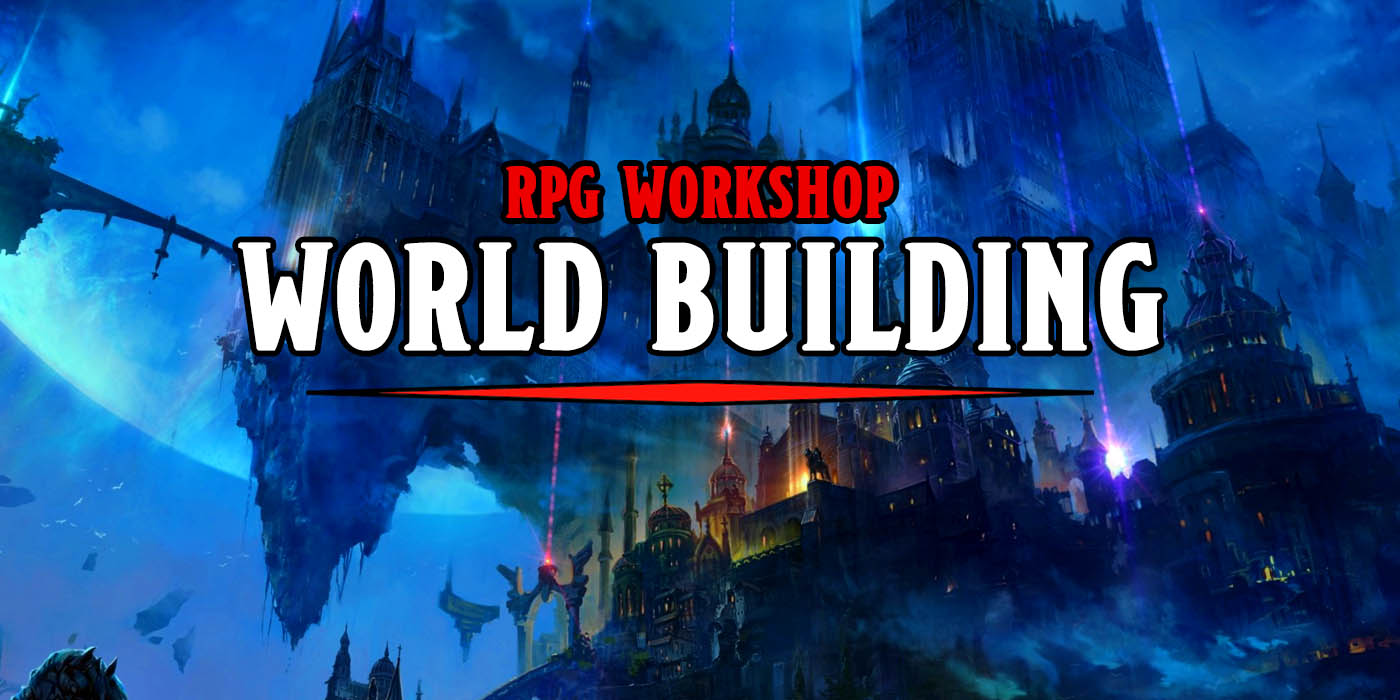D&D Workshop: The Number One Rule of Worldbuilding


Let’s talk about how to build the perfect world for your D&D game.
There comes a time in almost every DM’s life when they want to move beyond the existing settings and create one of their own. Maybe you have an amazing story to tell, and it needs its own world to be told in. Perhaps you have a super awesome idea for a world and want to run adventures in it. Maybe you just like making up settings. Whatever the impetus, creating your own setting can be fun and rewarding both to you and your playgroup. In this new ongoing series, we will look at the steps you can take to create your own setting (a process known as world-building), and we’ll look at some tips and tricks of good world-building and some common mistakes people make. Along the way, we will build our own setting and world.
Welcome to World Building Workshop, let’s get started.
The Groundwork
Last time on World Building Workshop, I talked about laying the groundwork for your world building. With these basic choices out of the way, we can move on to thinking about the world itself and building that. As we work on making the world there are some basic ground rules that we need to keep in mind. Today lets go over the most important rule, one that covers every aspect of world building.
Be Consistent
If there is one single rule, you should try to follow when building a world its “be consistent.” Consistency is the number one hallmark of a well-built world and will affect every part of it. The biggest problem world builders run into is not being consistent – it’s a flaw that will undermine the whole endeavor. So what do I mean by being consistent? In essence, your world needs to adhere to and obey its own internal logic.
A complaint you will often hear about world building, or the story aspects of world building is “that’s unrealistic.” In most cases what people actually mean when they are calling something unrealistic is that it’s inconsistent, it’s not realistic within the rules of the setting. Consistency makes the world seem believable and real. When you fail at it, it can break your audience or players, suspension of disbelief.
A Good Example
As an example take the ever amazing Avatar: The Last Airbender. In it, people, benders, can manipulate elements to do their bidding. For instance, Water Benders can control water. This is inherently unrealistic and unbelievable action. Obviously, no one in real life can do. Yet, to the audience, this is believable because the rules are consistent. Later in the show, we meet water benders that can control human bodies, but manipulating the water in the blood. Again there is nothing “realistic” about this action, but because it remains consistent with the worlds internal rule we go along with it. We, as the audience are fine the unrealistic action, realistic because it remains consistent.
If, on the other hand, later in the show a Water Bender had been suddenly able to manipulate copper fans would have been in an uproar. On the face of things, someone being able to manipulate copper is no more unbelievable than someone being able to manipulate water. In the real world, both make about the same amount of sense. However since it would be inconsistent with the established rules of the world, it would be “unbelievable.”
A Bad Example
A good, and popular, example of where being inconsistent undermined good wording building is the more recent seasons of the hit HBO show Game of Thrones. Warning: Minor Spoilers For Seasons 1-7.
In the early seasons of the series, the showrunners did an amazing job of world building. One of the big things they did was show just how large the world was and how long it takes to get anywhere. The Seven Kingdoms are, after all, supposed to be about the size of south America. In the first season traveling places takes time. It takes two episodes for characters to get from Winterfell in the North to Kings Landing in the center of the kingdom. Later in season five, it takes about 7 episodes for Tyrion to get from the city of Pentos to the city of Meereen. The world is large and well built.
However, in the later seasons (especially the end of season 6 and through season 7) views noticed that people were suddenly able to travel around places very quickly. People would be shown in one location, and then show again somewhere else in a place it should have taken them weeks or months to get to. These actions were fundamentally inconsistent with the world building and the rules the show had laid out. Even though they weren’t really any less realistic than say the dragons or magic in the show, because it was inconsistent it bothered people where the other things did not.
Constancy In Your RPG Setting
In many ways being consistent is even more important for an RPG setting than a story set in other media. This is due to the interactive nature of the game. World building, and the consistency of it will help to inform your players’ actions. Consistency will not only lead to a richer game for the players, but it can be used to help move your players in the right direction and create a smooth experience. Often as a DM it is best if your players are able to act in a manner that makes sense. This helps you better build a story around them. If the world building is well done and consistent, the players can react to it and be guided in their actions. If it’s poorly done, they can go all over the place.
Consistency will also help you say no to players. Sometimes players will want to do something that you can’t allow – maybe they will be asking to break the rules in some way, or just to pull off some kind of harebrained plot. If you have built a consistent setting and can show how their actions would be inconsistent with the rules of the setting, you’ll have an easy time saying no to them. Without this, you can be left with arbitrary rulings which your players may get upset over. Thus, consistency can help not only with the set up and building but will have ramifications and benefits through your campaign. That is why it is the most important rule.
Tune In Next Time For More World Building Tips!















